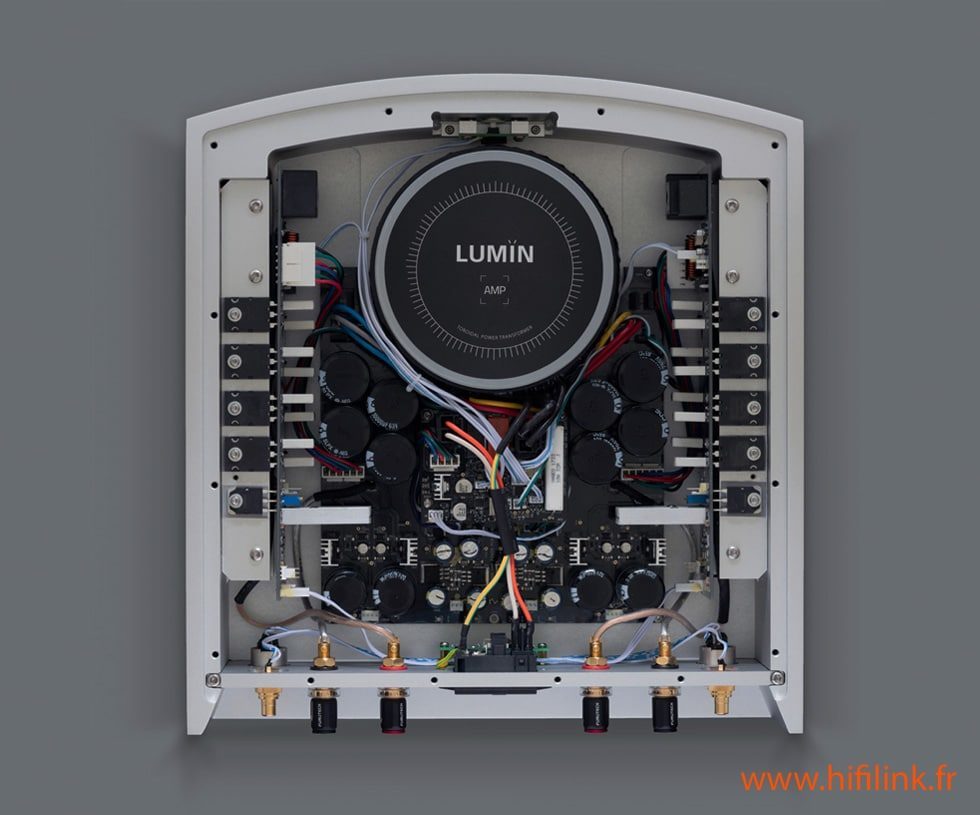
With the DSD processing initially turned off and a simple 16/44.1 FLAC copy of Mark Lanegan and Duke Garwood’s Black Pudding, the Lumin manages the balancing act of being phenomenally detailed, while managing to present this information in an impressively unforced manner. The performance of the A-1 is equally fuss-free, but the longer you listen, the more impressive it becomes. The other design decision that Lumin has taken is that the A-1 is only fitted for a wired connection.Ĭonnected to a QNAP NAS drive via Netgear router, the Lumin had no difficulty handling a few terabytes of mixed formats and turning it into a cohesive library. You can stream radio via the control app, but for anyone who makes regular use of the medium it might be a detractor. The A-1 is unusual in that there is no on board provision for internet radio.
#Lumin audio software
The second is that as Lumin has no alternative but to make the app a good one, the result is a clear and easy to use piece of software that is stable and impressively well thought out. The review sample was supplied in silver, but a black finish is available to special order as a added cost option. The build is more than up to the standard that might be expected at the price and the A-1 manages to feel special in use. With only the large and easy to read display breaking up the sleek casework, the overall impression is extremely positive. The first is that the A-1 is beautifully minimalist. While this is a fairly bold move, there are two beneficial effects. As if this wasn’t radical enough, the app is only available for the iPad. The Lumin is otherwise completely devoid of controls and is totally dependent on the partnering control app. This is in fact the only button on the entire unit. The final connection is a screw-in umbilical connector for the external power supply that also has an on-off button. As well as analogue outputs, the A-1 is fitted with a BNC digital output and an HDMI connection, which allows for DSD to be transferred to a suitably equipped external DAC if you wish. The A-1 is fully balanced and can output via either XLR or RCA connections, and these transformers are in the circuit for both connections. The pair of Wolfson WM8741 DACs operating in dual mono is far from uncommon, but Lumin’s decision to partner the Wolfson DACs with an output stage built around a pair of Lundahl output transformers is rather less conventional.

The hardware that Lumin uses to perform this is a mixture of the conventional and more unusual. However, you have the option of turning automatic DSD conversion off so as to compare DSD to conventional PCM decoding, which can be controlled via the control app. The Lumin A-1 converts all incoming material to DSD. As well as supporting PCM as WAV, FLAC, ALAC and AIFF at sampling rates up to 24/384 (which the more observant among you will note was the must have feature of CES 2013), the A-1 is also compatible with DSD 64 but not DSD 128.

Lumin is a new arrival in the field of network audio, but the A-1 (recently titled as such, when the company launched other models in the range at CES) launched last year finds itself looking like a very interesting proposition. For other companies though, this is the sort of news that might have them reaching for the champagne. Never mind that the actual number of albums on DSD that have any real commercial appeal could be counted on the fingers of one knee, or that the more cynical among us suspect that this is driven by the hi-fi industry looking for another format, DSD suddenly matters.įor many streamer and DAC manufacturers, this represents a technical headache that they will be currently deciding whether or not to resolve. One of the most consistent messages that came out of CES 2014 was the importance of DSD support.


 0 kommentar(er)
0 kommentar(er)
